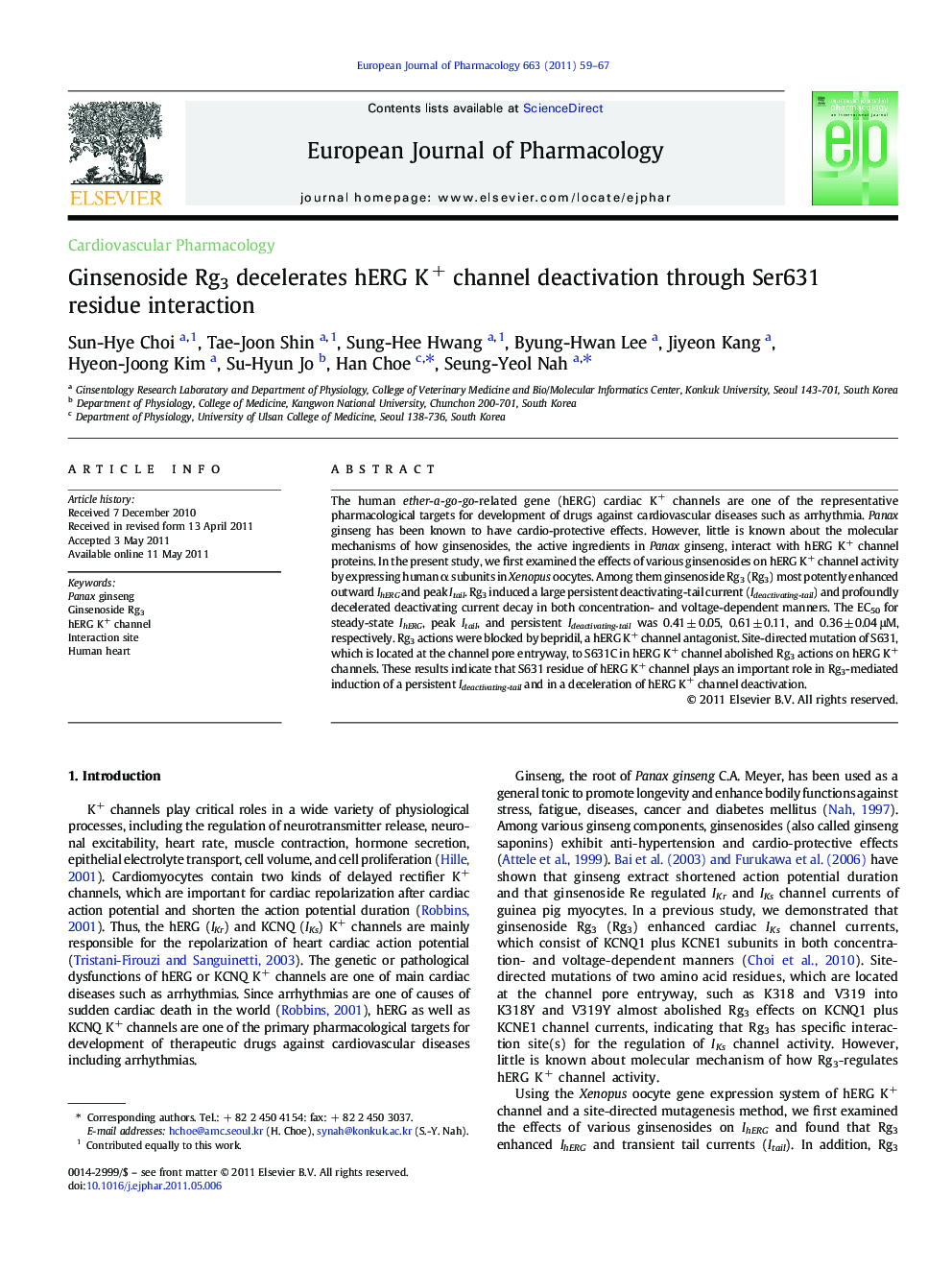| کد مقاله | کد نشریه | سال انتشار | مقاله انگلیسی | نسخه تمام متن |
|---|---|---|---|---|
| 2532754 | 1559022 | 2011 | 9 صفحه PDF | دانلود رایگان |

The human ether-a-go-go-related gene (hERG) cardiac K+ channels are one of the representative pharmacological targets for development of drugs against cardiovascular diseases such as arrhythmia. Panax ginseng has been known to have cardio-protective effects. However, little is known about the molecular mechanisms of how ginsenosides, the active ingredients in Panax ginseng, interact with hERG K+ channel proteins. In the present study, we first examined the effects of various ginsenosides on hERG K+ channel activity by expressing human α subunits in Xenopus oocytes. Among them ginsenoside Rg3 (Rg3) most potently enhanced outward IhERG and peak Itail. Rg3 induced a large persistent deactivating-tail current (Ideactivating-tail) and profoundly decelerated deactivating current decay in both concentration- and voltage-dependent manners. The EC50 for steady-state IhERG, peak Itail, and persistent Ideactivating-tail was 0.41 ± 0.05, 0.61 ± 0.11, and 0.36 ± 0.04 μM, respectively. Rg3 actions were blocked by bepridil, a hERG K+ channel antagonist. Site-directed mutation of S631, which is located at the channel pore entryway, to S631C in hERG K+ channel abolished Rg3 actions on hERG K+ channels. These results indicate that S631 residue of hERG K+ channel plays an important role in Rg3-mediated induction of a persistent Ideactivating-tail and in a deceleration of hERG K+ channel deactivation.
Journal: European Journal of Pharmacology - Volume 663, Issues 1–3, 1 August 2011, Pages 59–67